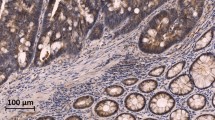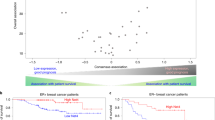Summary
Interactions between the extracellular matrix macromolecules and tumor cells are critical in the process of metastasis formation. We show here that elastins (both mature insoluble elastin and a 75-kDa soluble peptide: κ-elastin) adhere rapidly to two cell lines with high metastatic capacities: a metastatic lung carcinoma cell line (3LL-HM) and a human amelanotic melanoma cell line (A-2058); by contrast the low-metastatic Lewis lung carcinoma cell line variant as well as a rhabdomyosarcoma cell line with a low metastatic potential bind to elastins to a much lower extent.3H-labelled κ-elastin was used in order to study elastin-3LL-HM interaction. It was found to be saturable (2 ng3H-labelled κ-elastin/106 cells), with one class of high-affinity binding sites having Kd equal to 1.3 nM and 16000 sites/cell. The binding of κ-elastin to 3LL-HM cells at its receptor triggered several cell responses; (a) increase of intracellular Ca2+ concentration; (b) induction of 3LL-HM chemotaxis toward the κ-elastin gradient; (c) stimulation of the adherence of mature insoluble elastin. In contrast to non-transformed cells such as fibroblasts and smooth muscle cells, the adhesion kinetics of insoluble elastin to 3LL-HM did not exhibit a lag period; the rapid binding of insoluble elastin to the tumor cells was followed by its slow detachment from the cells, which lasted for 6 h. 3LL-HM cells but not human skin fibroblasts were shown to secrete elastinolytic activity inhibitable by metal-chelating agents.
In vivo studies were performed in order to evaluate the influence of κ-elastin binding to 3LL-HM cells on their ability to form lung colonies in mice. It was shown that pretreatment of 104 3LL-HM cells with 10 ΜM kelastin and the simultaneous i.v. injection into mice of 750 Μg κ-elastin together with the highly metastatic cells was able to reduce the number of lung colonies by more than 70% after 12 days.
Similar content being viewed by others
Abbreviations
- 3LL-HM, 3LL-LM:
-
highly metastatic and low-metastatic Lewis lung carcinoma cells
References
Blood CM, Zetter BR (1989) Membrane-bound protein kinase C modulates receptor affinity and chemotactic responsiveness of Lewis lung carcinoma sublines to an elastin-derived peptide. J Biol Chem 264:10614–10620
Blood CM, Sasse J, Brodt P, Zetter BR (1988) Identification of a tumor cell receptor for VGVAPG, an elastin derived chemotactic peptide. J Cell Biol 107:1987–1995
Buck CA, Horwitz AF (1987) Cell surface receptors for extracellular matrix molecules. Ann Rev Cell Biol 3:179–205
Chin JR, Murphy G, Werb Z (1985) Stromelysin, a connective tissue degrading metallo endopeptidase secreted by stimulated rabbit synovial fibroblasts in parallel with collagenase. J Biol Chem 260:12367–12376
Fülöp T, Jacob MP, Varga Z, Foris G, Leovey A, Robert L (1986) Effect of elastin peptides on human monocytes: Ca2+ mobilization, stimulation of respiratory burst and enzyme secretion. Biochem Biophys Res Commun 141:92–98
Groult V, Ferrari P, Tixier JM, Jacob MP, Robert L, Hornebeck W (1991) Identification of the proteins mediating the interactions of elastin with human skin fibroblasts in culture. Cell Biochem Funct (in press)
Hinek A, Wrenn DS, Mecham RP, Barondes SH (1988) The elastin receptor, a galactoside binding protein. Science 239:1539–1541
Hornebeck W, Adnet JJ, Robert L (1978) Age-dependent variation of elastin and elastase in aorta and human breast cancers. Exp Gerontol 13:293–298
Hornebeck W, Potazman JP, De Cremoux H, Bellon G, Robert L (1983) Elastase-type activity of human serum; its variation in chronic obstructive lung diseases and atherosclerosis. Clin Physiol Biochem 1:285–292
Hornebeck W, Tixier JM, Robert L (1986) Inducible adhesion of mesenchymal cells to elastic fibres: elastonectin. Proc Natl Acad Sci USA 83:5517–5520
Hornebeck W, Soleilhac JM, Tixier JM, Moczar E, Robert L (1987) Inhibition by elastase inhibitors of the formyl Met Leu Phe induced chemotaxis of rat polymorphonuclear leukocytes, Cell Biochem Funct 5:113–122
Hynes RO (1987) Integrins: a family of cell surface receptors. Cell 48:549–554
Iwamoto Y, Robey FA, Graf J, Sasaki M, Kleinman HK, Yamada Y, Maritin GR (1987) YIGSR, a synthetic laminin pentapeptide, inhibits experimental metastasis formation. Science 238:1132–1134
Jacob MP, Hornebeck W (1985) Isolation and characterization of insoluble and kappa-elastin. Front Matrix Biol 10:92–129
Jacob MP, Fulop T, Foris G, Robert L (1987) Effect of elastin peptides on ion fluxes in mononuclear cells, fibroblast and smooth muscle cells. Proc Natl Acad Sci USA 84:995–999
Kopper L, Hahn TV, Lapis K (1982) Experimental model for liver metastasis formation using Lewis lung tumor. J Cancer Res Clin Oncol 103:31–38
Lapis K, Timar J, Pal K, Kopper L, Jeney A, Timar F (1987) Membrane properties of Lewis lung tumor cells with “low” and “high” metastatic capacity. Selective anti-metastatic effect of a new glycoconjugate-glycosamino-glycan blocking agent 5′-hexyl-2′-deoxyuridin (HUdR). In: Cory JG, Szentivanyi A (eds) Cancer biology and therapeutics. Plenum, New York, pp 79–94
Lapis K, Timar J, Timar F, Pal K, Kopper L (1985) Differences in cell surface characteristics of poorly and highly metastatic Lewis lung tumor variants. In: Lapis K, Liotta LA, Robson AS (eds) Biochemistry and molecular genetics of cancer metastasis. Nijhoff, The Hague, pp 225–237
Mecham RP, Hinek A, Entwistle R, Wrenn DS, Griffin GL, Senior RM (1989a) Elastin binds to a multifunctional 67 kilodalton peripheral membrane protein. Biochemistry 28:3716–3722
Mecham RP, Hinek A, Griffin GL, Senior RM, Liotta LA (1989b) The elastin receptor shows structural and functional similarities to the 67 kDa tumor cell laminin receptor. J Biol Chem 264:16652–16657
Netland PA, Zetter BR (1986) Melanoma cell adhesion to defined extracellular matrix components. Biochem Biophys Res Commun 139:515–522
Pal K, Kopper L, Timar J, Rajnay T, Lapis K (1985) Comparative study on Lewis lung tumor lines with “low” and “high” metastatic capacity. Growth rate, morphology and tumor-host relationship. Invasion Metastasis 5:159–165
Pena SDJ, Hughes RC (1978) Fibronectin-plasma membrane interactions in the adhesion and spreading of hamster fibroblasts. Nature 276:80–83
Rao NC, Barsky SH, Terranova VP, Liotta LA (1983) Isolation of a tumor cell laminin receptor. Biochem Biophys Res Commun 111:804–808
Robert L, Jacob MP, Fulop T, Timar J, Hornebeck W (1989) Elastonectin and the elastin receptor. Pathol Biol 37:736–741
Ruoslahti E (1988) Fibronectin and its receptors. Annu Rev Biochem 57:375–413
Ruoslahti E, Pierschbacher MD (1987) New perspectives in cell adhesion: RGD and integrins. Science 238:491–497
Terranova VP, Villiams JF, Liotta LA, Martin GR (1984) Modulation of the metastatic activity of melanoma cells by laminin and fibronectin. Science 226:982–984
Varga Z, Jacob MP, Robert L, Fulop T (1989) Identification and signal transduction mechanism of elastin peptide receptor in human leukocytes. FEBS Lett 258:5–8
Wrenn DS, Hinek A, Mecham RP (1988) Kinetics of receptor-mediated binding of tropoelastin to ligament fibroblasts. J Biol Chem 263:2280–2284
Yeh M, Anderson N, Ornstein-oldstein N, Bashir MM, Rosen-bloom JC, Abrams W, Indik Z, Yoon K, Parks W, Mecham R, Rosenbloom J (1989) Structure of the bovine elastin gene and S1 nuclease analysis of alternative splicing of elastin mRNA in the bovine nuchal ligament. Biochemistry 28:2365–2370
Author information
Authors and Affiliations
Rights and permissions
About this article
Cite this article
Timar, J., Lapis, K., Fulop, T. et al. Interaction between elastin and tumor cell lines with different metastatic potential; in vitro and in vivo studies. J Cancer Res Clin Oncol 117, 232–238 (1991). https://doi.org/10.1007/BF01625430
Received:
Accepted:
Issue Date:
DOI: https://doi.org/10.1007/BF01625430




